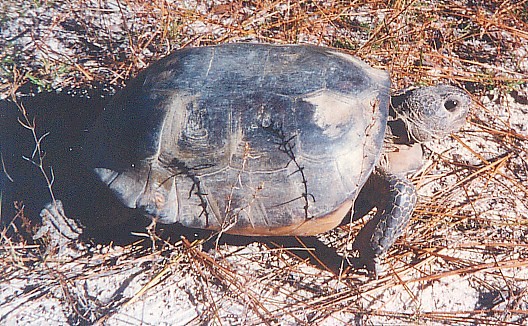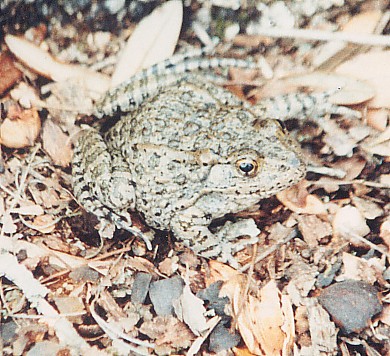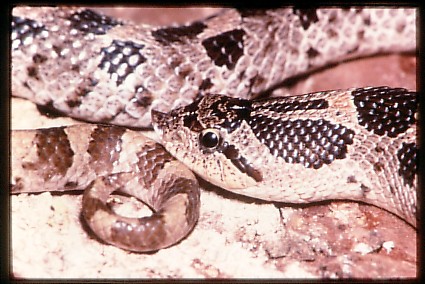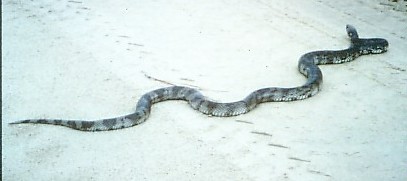 |
 |
 |
|
Rare Amphibians & Reptiles of Upland Sandhills
|
|
Upland Sandhill habitat has disappeared at an ever-increasing rate across the Deep South.
Because of its high and dry nature, Upland Sandhills are very suitable for a variety of human activities, such as development,
subdivisions, agriculture, etc. A very unique and specialized array of amphibians and reptiles are found within this
ecosystem. Perhaps the most important and significant is the Gopher tortoise, along with a host of numerous species
associated with tortoises that rely upon Gopher tortoise burrows for various aspects of their survival.

(Above) Gopher Tortoise (Gopherus polyphemus).
Mobile Co., AL.
The Gopher tortoise is one of the most important forms of wildlife within its range.
Over 300 other species of wildlife utilize the burrow tortoises excavate for various reasons. Gopher tortoises have
greatly declined for a variety of reasons including: development & loss of habitat, forestry & agricultural practices,
highway mortality & use as food by humans.
|
|
 |
|

(Above) Dusky
Gopher Frog (Rana capito). Okaloosa Co., FL.
(Above) Gopher frogs
are rarely ever seen as they are largely fossorial or spend a great deal of time in Gopher tortoise burrows. Gopher
frogs breed in upland ephemeral ponds and their numbers have declined drastically over the years. Okaloosa
Co., FL.
(Right) Pine snakes are large, fossorial snakes that spend the majority of their lives underground.
An adult pine snake can be an impressive and intimidating animal when encountered in the wild. Pine snakes can grow
to six feet or more, are very heavy-bodied, and can put on quite a display of hissing, swelling up with air and striking at
whatever or whomever may be in their way! However, Pine snakes are harmless, are very beneficial and consume
thousands of rodents in their lifetimes. A preferred food of Florida Pine snakes is Pocket gophers.
|
|
|
|
 |
|

(Above) Southern Hognose Snake (Heterodon
simus). Richland Co., SC.
Southern Hognose snakes have declined at an alarming rate over the past 10 - 20 years
in the Southeast. They may be confused with the more common Eastern Hognose snake, but are a smaller, more plump snake,
with an even greater upturned snout.
(Below) Florida Pine Snake (Pituophis
melanoleucus mugitus). Okaloosa Co., FL.

|
 |
|
|
|
|



